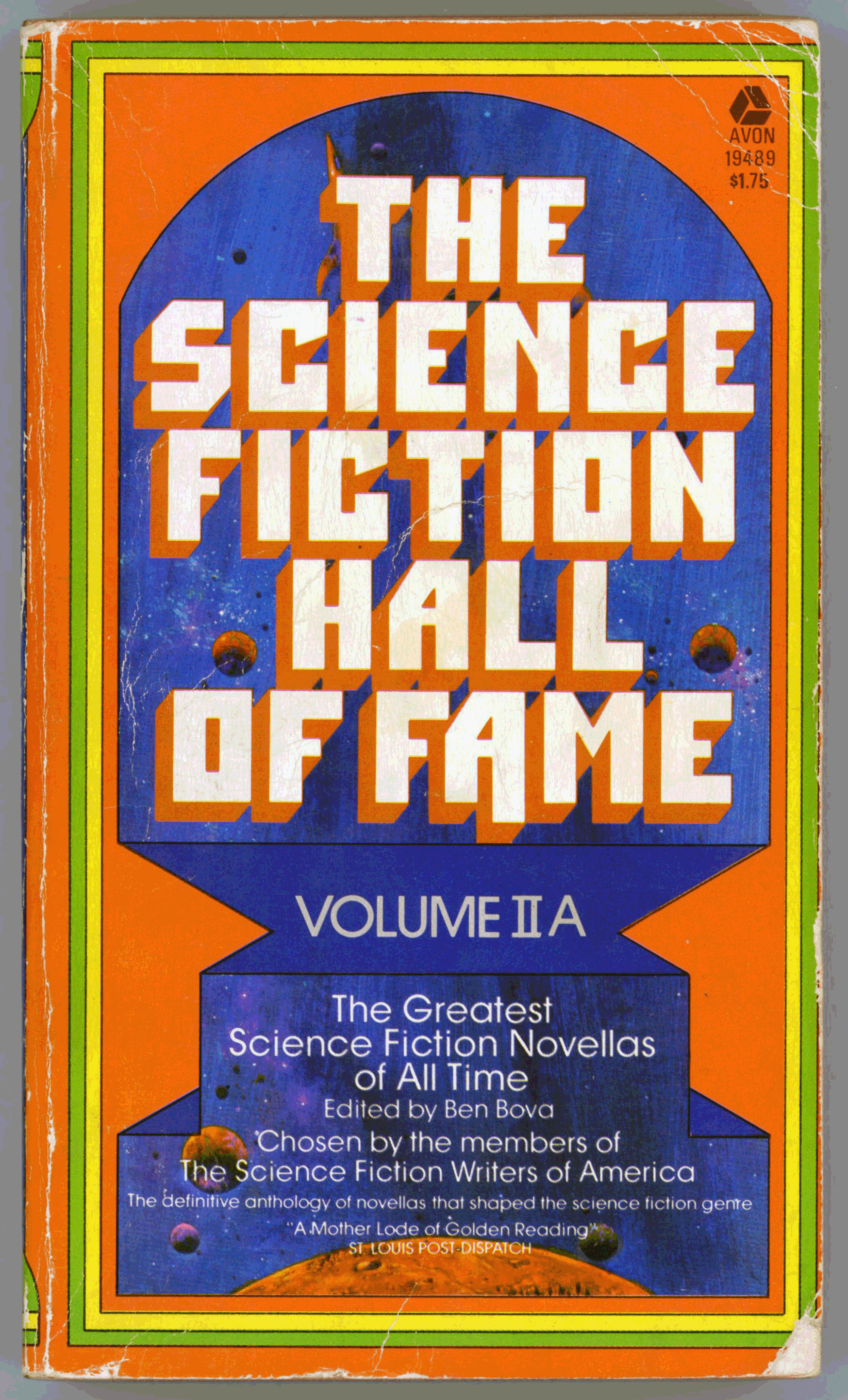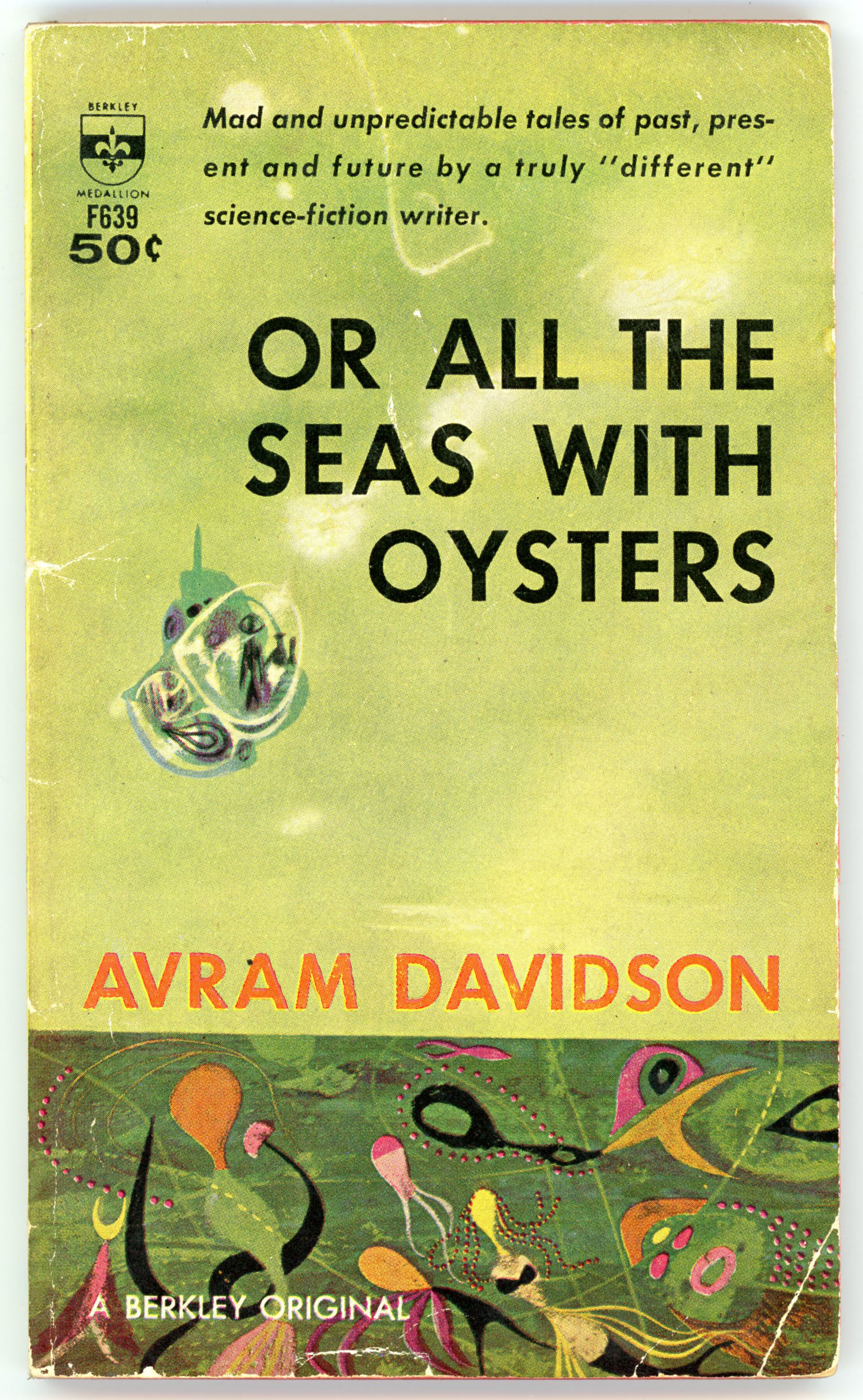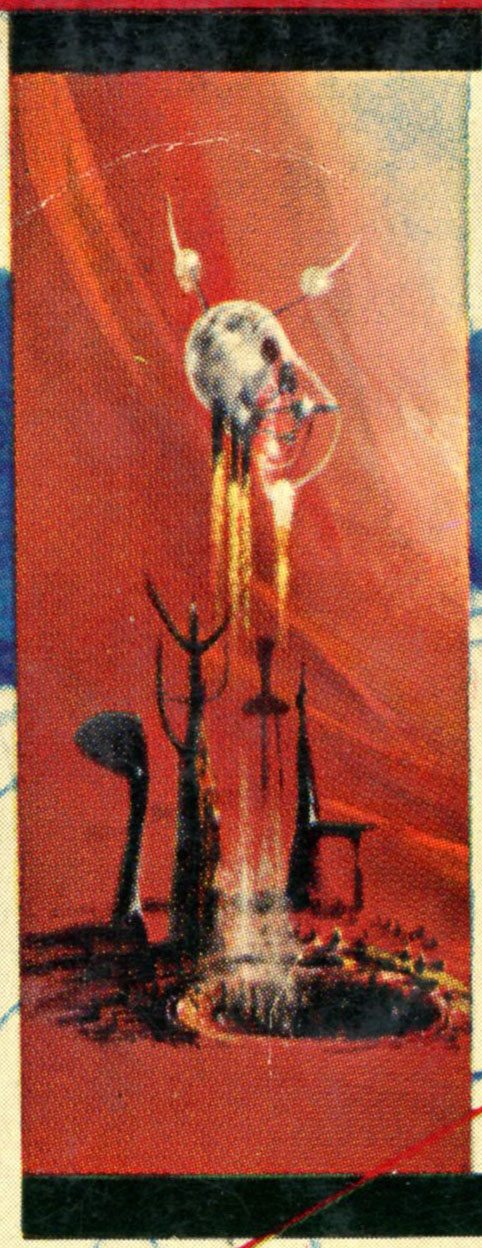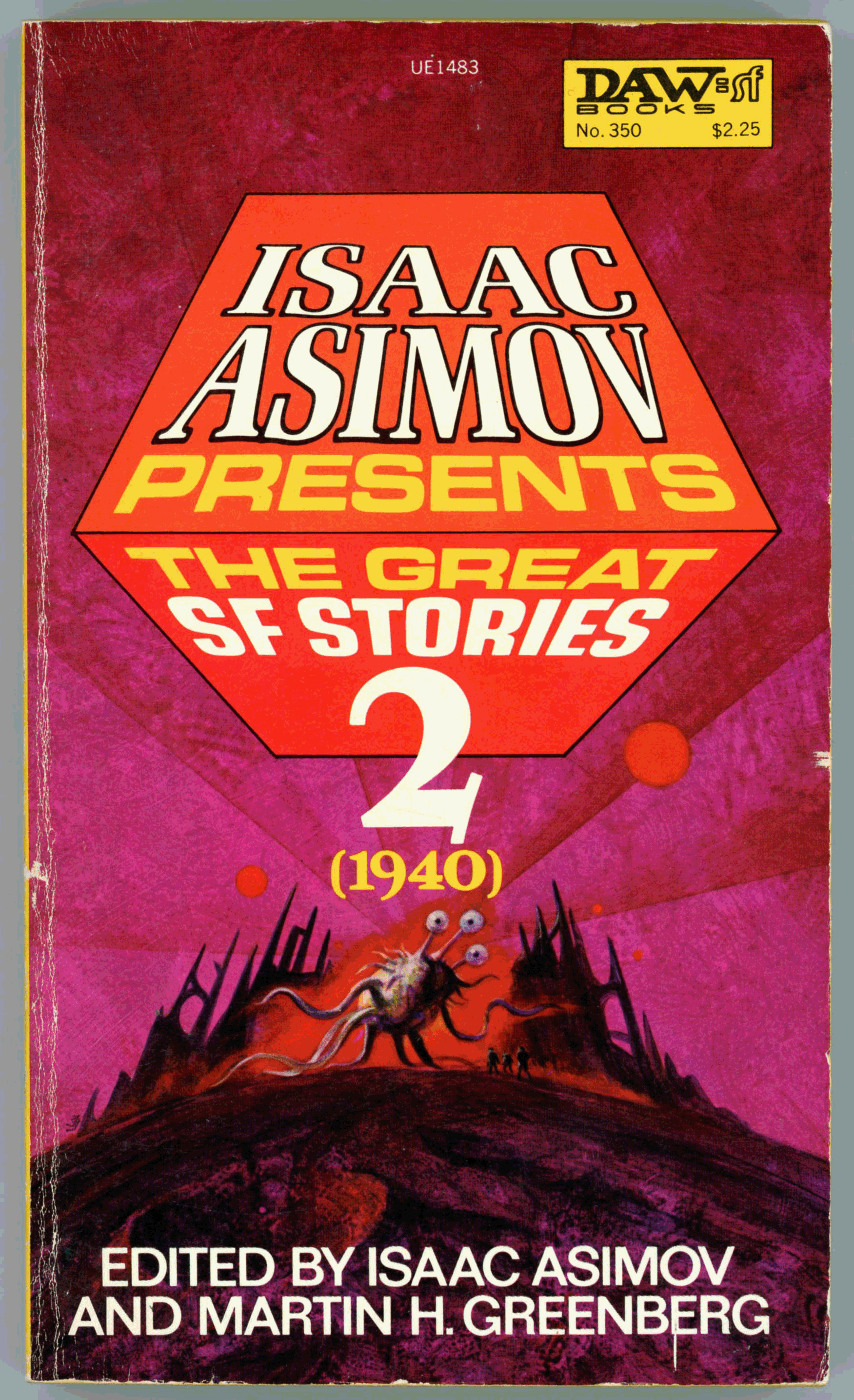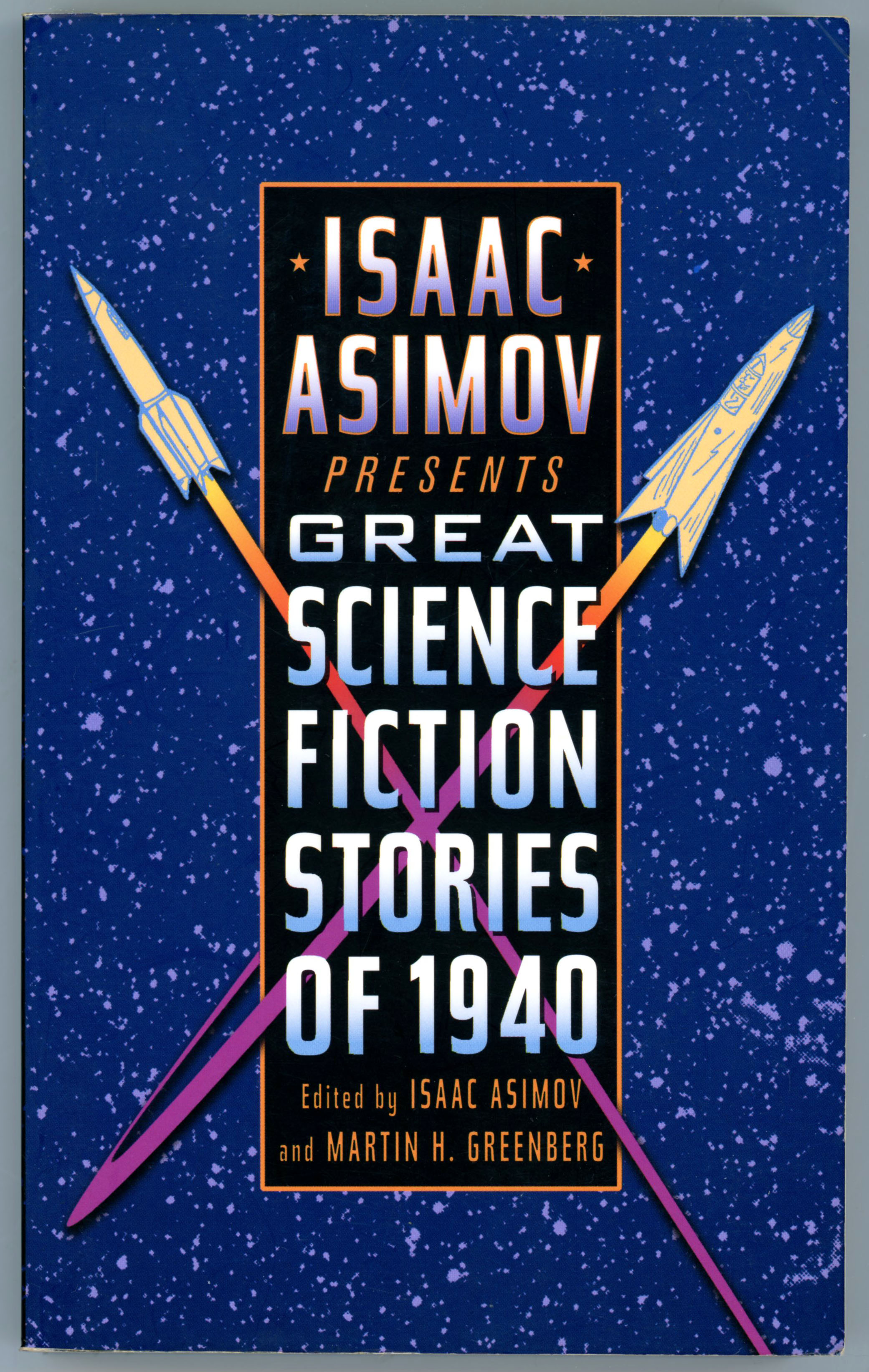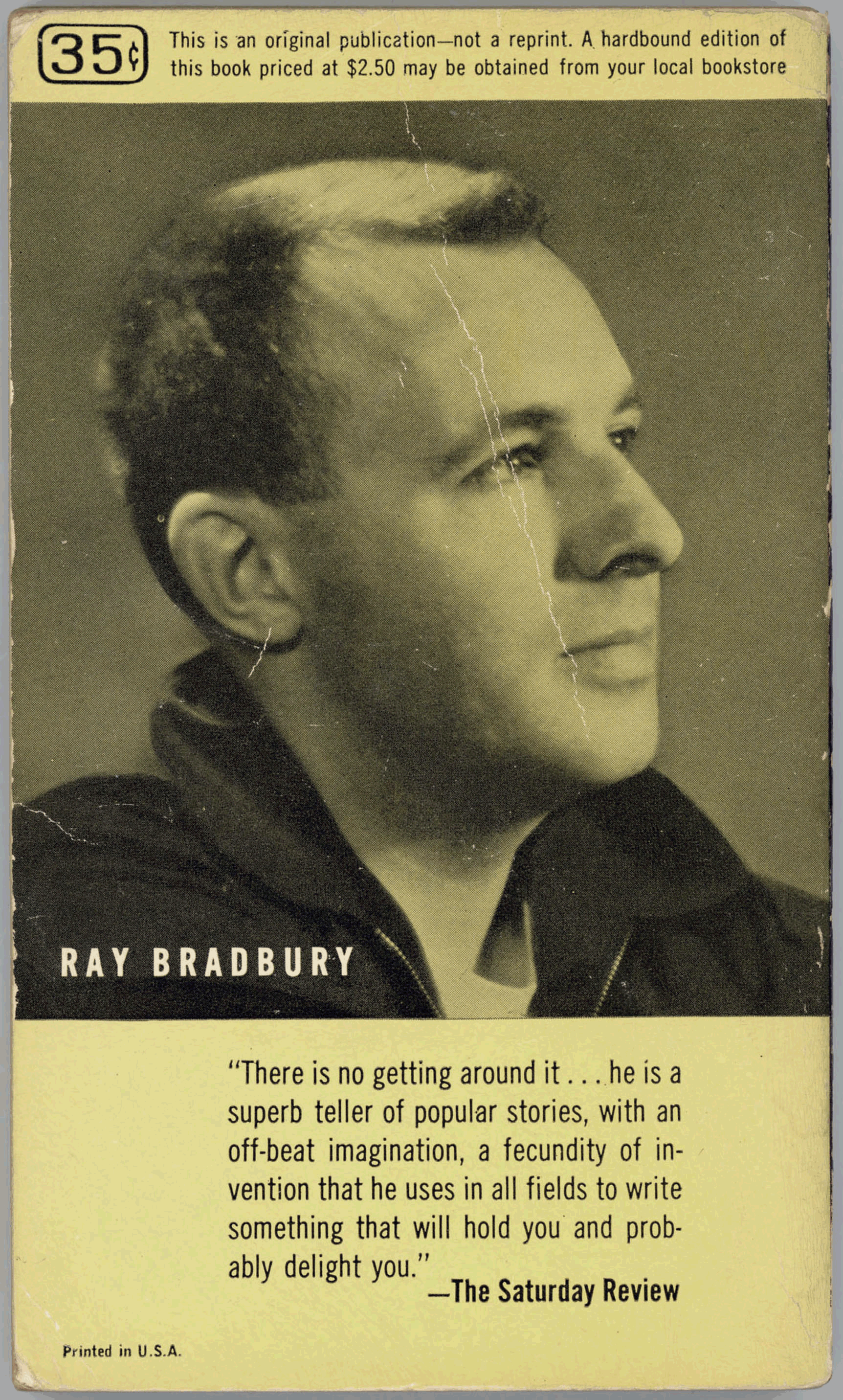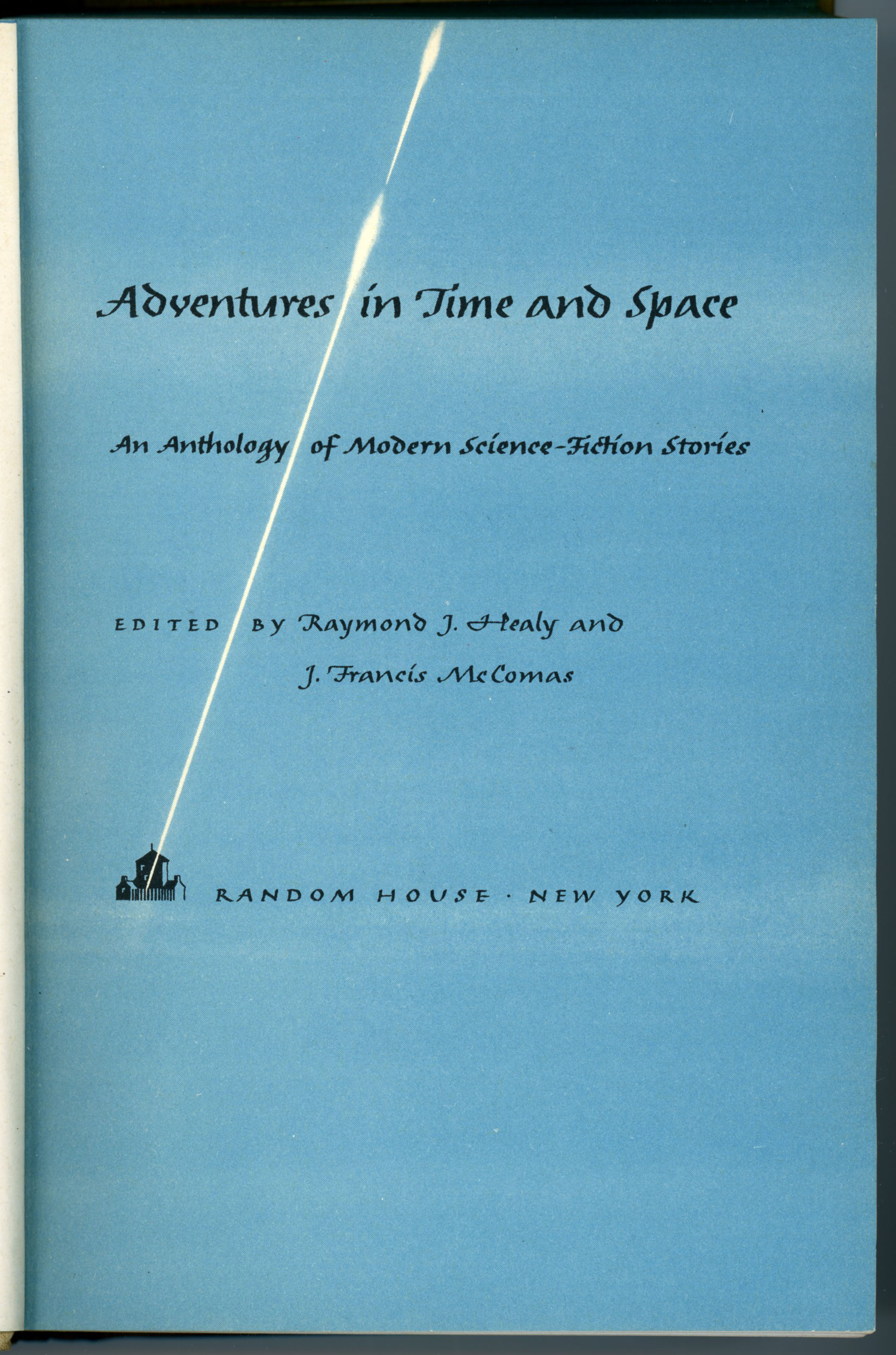 One of the forty-six Galaxy Science Fiction novels published between 1950 and 1961, The Humanoids includes and was based upon Jack Williamson’s tale “With Folded Hands…”, which appeared in the July, 1947 issue of Astounding Science Fiction, with cover art by William Timmins.
One of the forty-six Galaxy Science Fiction novels published between 1950 and 1961, The Humanoids includes and was based upon Jack Williamson’s tale “With Folded Hands…”, which appeared in the July, 1947 issue of Astounding Science Fiction, with cover art by William Timmins.
Category: Science Fiction – Books
The Science Fiction Hall of Fame – Volume IIA, Edited by Ben Bova – 1973
Introduction, by Ben Bova
“Call Me Joe”, by Poul Anderson
(Astounding Science Fiction, April, 1957)
“Who Goes There?”, John W. Campbell, Jr (as Don A. Stuart)
(Astounding Science Fiction, August, 1938)
“Nerves”, by Lester del Rey
(Astounding Science Fiction, September, 1942)
“Universe”, by Robert A. Heinlein
(Astounding Science Fiction, May, 1941)
“The Marching Morons”, by Cyril M. Kornbluth
(Galaxy Science Fiction, April, 1951)
“Vintage Season”, by Henry Kuttner and Catherine L. Moore (as Lawrence O’Donnell)
(Astounding Science Fiction, September, 1946)
“And Then There Were None”, by Eric Frank Russell
(Astounding Science Fiction, June, 1951)
“The Ballad of Lost C’Mell”, by Cordwainer Smith
(Galaxy Science Fiction, October, 1952)
“Baby Is Three”, by Theodore Sturgeon
(Galaxy Science Fiction, October, 1952)
“The Time Machine”, by H.G. Wells
(William Heinemann, 1895)
“With Folded Hands”, by Jack Williamson
(Astounding Science Fiction, July, 1947)
Or All The Seas With Oysters, by Avram Davidson – 1962 [Richard Powers]
Another intriguing cover by Richard Powers.
Rather than creating an image with a single, central image, most of the cover is given over to blank space, upon which the title and author’s name are superimposed. Only at the “bottom” of the cover (this is a nautically inspired title, after all!) appears a painting of various forms of sea-life, including a kind of mermaid, and a large-headed jellyfish.
And, floating above, a stylized, transparent submarine.
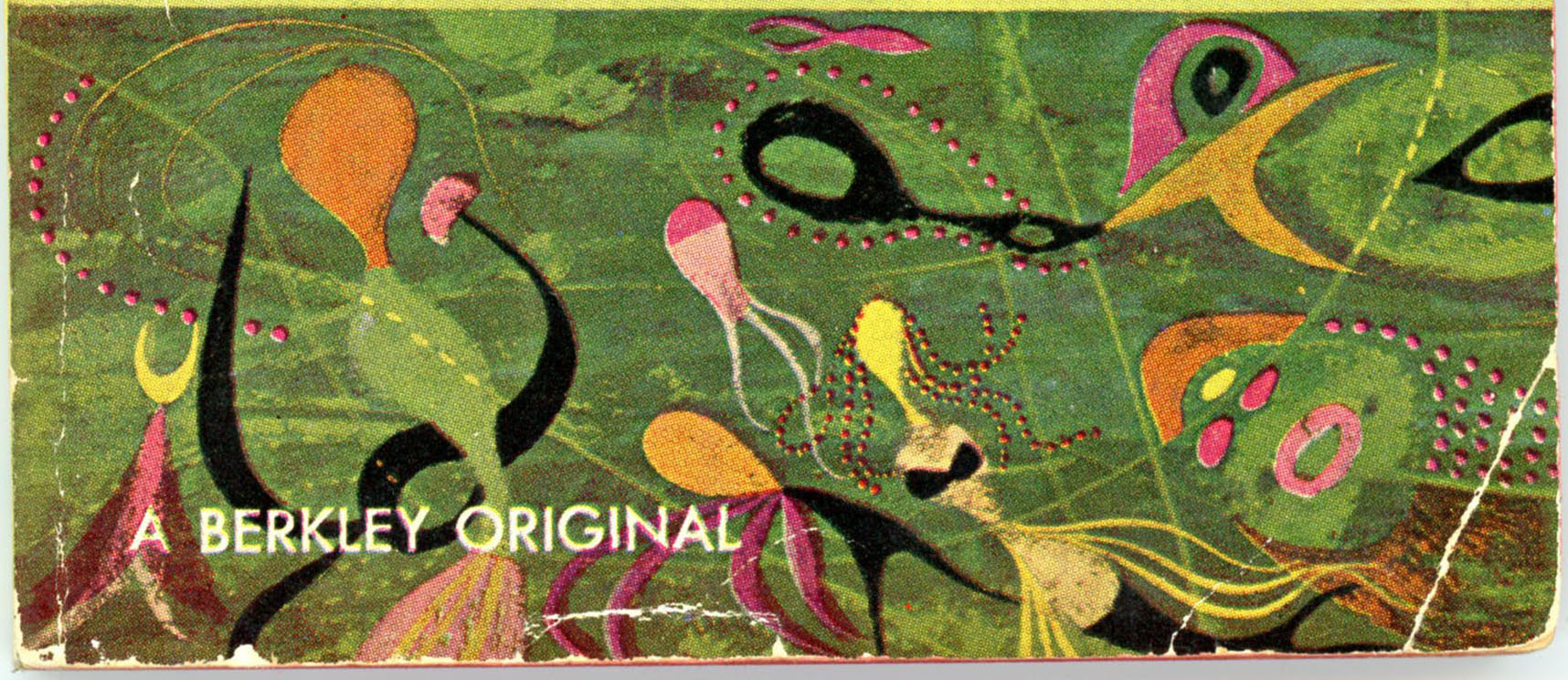 ______________________________
______________________________
Not a yellow, but a green submarine.
 ______________________________
______________________________
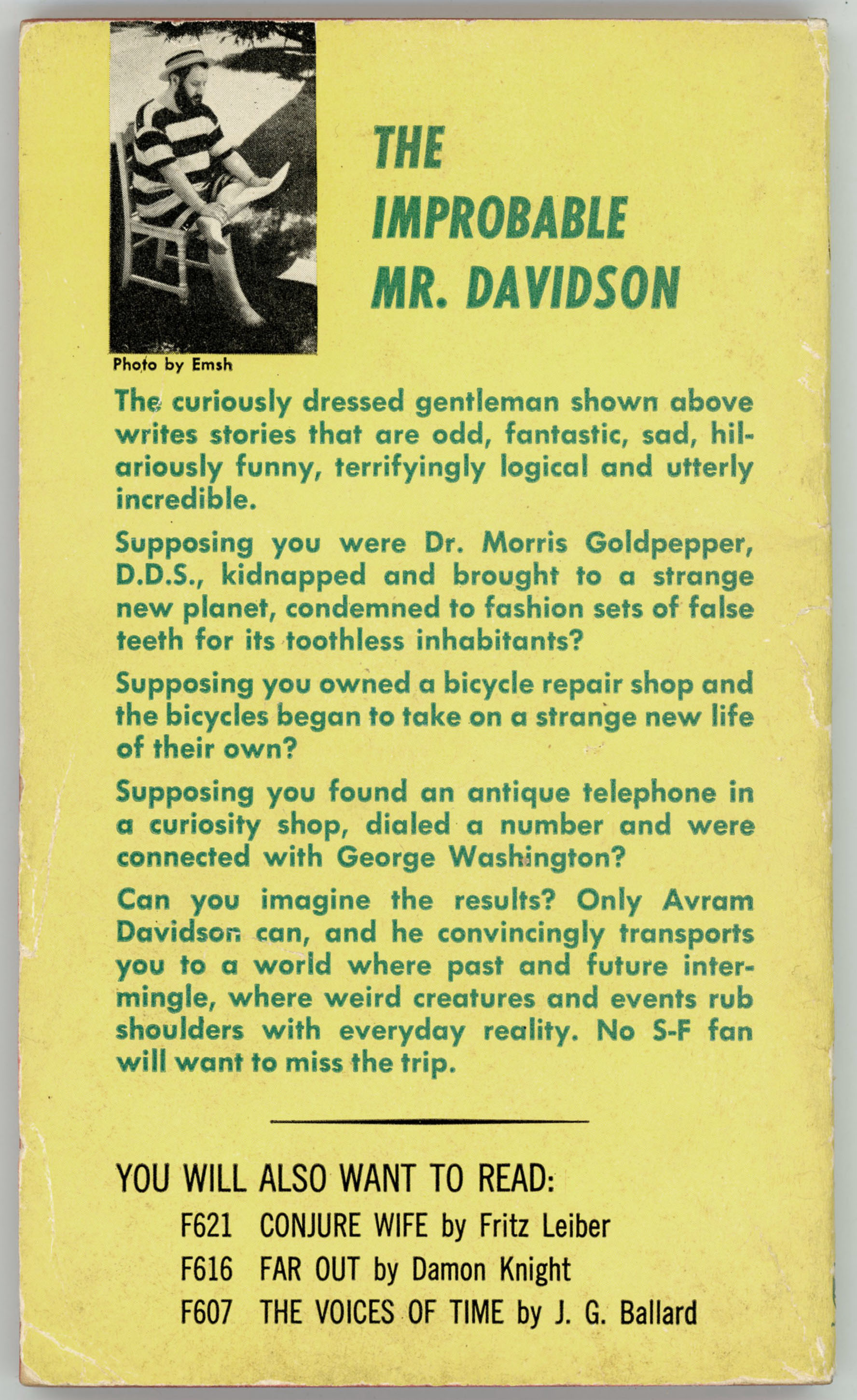 The rear covers bears a photograph of Avram Davidson, by Emsh (Edward Emshwiller).
The rear covers bears a photograph of Avram Davidson, by Emsh (Edward Emshwiller).
Or All the Seas With Oysters, Galaxy Science Fiction, May, 1958
Now Let Us Sleep, Venture Science Fiction, September, 1957
The Grantha Sighting, The Magazine of Fantasy and Science Fiction, April, 1958
Help! I am Dr. Morris Goldpepper, Galaxy Science Fiction, July, 1957
The Sixth Season, The Magazine of Fantasy and Science Fiction, June, 1960
Negra Sum, The Magazine of Fantasy and Science Fiction, November, 1957
My Boy Friend’s Name is Jello, The Magazine of Fantasy and Science Fiction, July, 1954
The Golem, The Magazine of Fantasy and Science Fiction, March, 1955
Summerland, The Magazine of Fantasy and Science Fiction, July, 1957
King’s Evil, The Magazine of Fantasy and Science Fiction, October, 1956
Great Is Diana, The Magazine of Fantasy and Science Fiction, August, 1958
I Do Not Hear You, Sir, The Magazine of Fantasy and Science Fiction, February, 1958
Author, Author, The Magazine of Fantasy and Science Fiction, July, 1959
Dagon, The Magazine of Fantasy and Science Fiction, October, 1959
The Montavarde Camera, The Magazine of Fantasy and Science Fiction, May, 1959
The Woman Who Thought She Could Read, The Magazine of Fantasy and Science Fiction, January, 1959
Tiger by The Tail and Other Science Fiction Stories, by Alan E. Nourse – 1964 [Richard Powers]
Richard Powers’ cover of the McFadden Press 1964 edition of Alan Nourse’s Tiger By the Tail typifies Powers’ unique, immediately identifiable, and highly creative approach to science fiction illustration.
Though eminently capable of creative technically realistic (albeit imaginary!) depictions of space vehicles, as well as the human form and facial expressions, Powers instead presents viewers with a mixture of symbolic visual elements, fragments of landscapes, and stylized color patterns, only one element of which is actually related to the book’s title: Orange and black tiger stripes at the lower left, held by tiger-striped, vaguely humanoid and not-really-even-human figure on the right.
For this edition of Tiger By the Tail, that’s all you’ll see of the “tiger”! (If you read the original story, you’ll understand the symbolism of Powers’ art…)
The other really science-fictiony elements on the cover are the silhouette of a figure at the lower right, and, a weirdly oval, semi-transparent spacecraft rising from a crater, in the center.
Whether or not these elements “fit” the anthology’s stories is not really relevant.
They set and fit a literary mood, and generate a sense of curiosity…
Tiger By The Tail, from Galaxy Science Fiction, November, 1951
Nightmare Brother, from Astounding Science Fiction, February, 1953
PRoblem, from Galaxy Science Fiction, October, 1956
The Coffin Cure, from Galaxy Science Fiction, April, 1957
Brightside Crossing, from Galaxy Science Fiction, January, 1956
The Native Soil, from Fantastic Universe, July, 1957
Love Thy Vimp, from The Magazine of Fantasy and Science Fiction, April, 1952
Letter of The Law, from If, January, 1954
Family Resemblance, from Astounding Science Fiction, April, 1953
Isaac Asimov Presents the Great SF Stories 11 (1949), Edited by Isaac Asimov and Martin H. Greenberg – 1984 [Michelangelo Miani]
 The selection of balance between colors used in this illustration is perfect.
The selection of balance between colors used in this illustration is perfect.
(Really.)
Moving from foreground to horizon, we find a steady gradation of colors ranging from a steely greenish-blue landscape, to buildings in muted (and foggy) purplish blue to bold and crisp bluish-purple and then, insignia blue towers, horizontally banded with grayish blue, and occasional yellow. The towers themselves are backlit by a rising (or is it setting? – I think it’s setting) sun, itself behind a veil of undulating red and yellow clouds.
And, the blimps in the left add a sense of balance and scale.
Alas, the purple whatever-it-is (an extraterrestrial kangaroo, perchance?) doesn’t – really “fit”, and the foreground space would have been better occupied by another blimp, or something like one of the floating, curved, metalloids typical of the work of Richard Powers. I wonder if the artist was influenced by the Tauntaun, in The Empire Strikes Back…
The Red Queen’s Race, by Isaac Asimov, from Astounding Science Fiction
Flaw, by John D. MacDonald, from Startling Stories
Private Eye, by Lewis Padgett (Henry Kuttner and Catherine L. Moore), from Astounding Science Fiction
Manna, by Peter Phillips, from Astounding Science Fiction
The Prisoner In The Skull, by Lewis Padgett (Henry Kuttner and Catherine L. Moore), from Astounding Science Fiction
Alien Earth, by Edmond Hamilton, from Thrilling Wonder Stories
History Lesson, by Arthur C. Clarke, from Startling Stories
Eternity Lost, by Clifford D. Simak, from Astounding Science Fiction
The Only Thing We Learn, by Cyril M. Kornbluth, from Startling Stories
Private – Keep Out, by Philip MacDonald, from The Magazine of Fantasy and Science Fiction
The Hurkle Is A Happy Beast, by Theodore Sturgeon, from The Magazine of Fantasy and Science Fiction
Kaleidoscope, by Ray Bradbury, from Thrilling Wonder Stories
Defense Mechanism, by Katherine MacLean, from Astounding Science Fiction
Cold War, by Henry Kuttner, from Thrilling Wonder Stories
The Witches of Karres, by James H. Schmitz, from Astounding Science Fiction
Isaac Asimov Presents the Great SF Stories 13 (1951), Edited by Isaac Asimov and Martin H. Greenberg – July, 1985
Though less said about the cover art of Volume 13 of Isaac Asimov Presents the Great SF Stories – “the better” (!) – I’m still including images of this volume’s cover, and a close-up of its art, for the sake of completeness…
Yeah.
(You get the idea.)
What were they thinking?
Null-P, by William Tenn, from Worlds Beyond
The Sentinel, by Arthur C. Clarke, from Ten Story Fantasy
The Fire Balloons, by Ray Bradbury, from Imagination
The Marching Morons, by Cyril M. Kornbluth, from Galaxy Science Fiction
The Weapon, By Frederic Brown, from Astounding Science Fiction
Angel’s Egg, by Edgar Pangborn, from Galaxy Science Fiction
“Breeds There A Man-“, by Isaac Asimov, from Astounding Science Fiction
Pictures Don’t Lie, by Katherine MacLean, from Galaxy Science Fiction
Superiority, by Arthur C. Clarke, from The Magazine of Fantasy and Science Fiction
I’m Scared, by Jack Finney, from Colliers
The Quest for St. Aquin, by Anthony Boucher, from New Tales of Space and Time
Tiger by The Tail, by Alan E. Nourse, from Galaxy Science Fiction
With These Hands, by Cyril M. Kornbluth, from Galaxy Science Fiction
A Pail of Air, by Fritz Leiber, from Galaxy Science Fiction
Dune Roller, by Julian May, from Astounding Science Fiction
Isaac Asimov Presents the Great SF Stories 1 (1939), Edited by Isaac Asimov and Martin H. Greenberg – March, 1979 [Jack Gaughan; Tom McKeveny]
From 1979 through 1992, Donald A. Wollheim books – founded by editor, publisher, and write Donald A. Wollheim, and his wife Elise – published twenty-five volumes of the Science Fiction Anthology Isaac Asimov Presents the Great SF Stories. Series authors Isaac Asimov and Martin H. Greenberg (whose names appear on each volume’s cover) designed the series such that each volume comprised a set of short stories that they deemed the best science fiction published every year (and only within “that” particular year) from 1939 through 1963, in terms of literary quality and cultural significance. Each volume includes approximately twelve to fifteen stories, the stories themselves chronologically arranged by month of publication within each given year.
At variance from retrospective anthologies wheres stories are arranged by theme, the chronological design of Asimov and Greenberg’s anthology created a “snapshot” of the evolution and development of science fiction across a quarter-century, shedding light on technological, social, ideological, and cultural changes in society commencing with the years just before the Second World War (the first volume covering 1939), through the early years of space exploration (the final volume covering 1963).
An invaluable aspect of the series, especially for one new to science fiction and unacquainted with the stories’ writers, was the way that Asimov and Greenberg presented very brief two-part introductions to each story. These typically comprised a short, “light” biographical blurb focused upon the literary and vocational career (sometimes one and the same; sometimes not!) of the story’s author, written by Greenberg, followed by commentary about the story itself, composed by Asimov. The latter would focus on the story’s literary significance, its “place” in the literature of science fiction (and sometimes literature in general), the cultural and social mechanics of publishing, and simply, the not-so-simple art of writing.
The cover art and content list of every volume can be viewed “here”, at WordsEnvisioned.
As for Volume 13, well… As good, sometimes excellent – and one or two times superlative – as the cover art is for some volumes, that for Volume 13, well…uh…er…leaves much to be desired. Enough said.
The series’ publication history is given below. You’ll see the volume number; the year represented by that volume; the publication date; cover artist or studio; New American Library / DAW Science Fiction Library serial numbers, and, price.
Volume 1: 1939; March, 1979 (Jack Gaughan) (UE 1700; $2.95)
Volume 2: 1940; August, 1979 (Jack Gaughan) (UE 1483; No. 350; $2.25)
Volume 3: 1941; March, 1980 (Jack Gaughan) (UE 1523; No. 377; $2.25)
Volume 4: 1942; October, 1980 (Antonio Bernal; Cover identical to 1945) (UE 1570; No. 405; $2.50)
Volume 5: 1943; March, 1981 (One Plus One Studios) (UE 1604; No. 426; $2.75)
Volume 6: 1944; December 1981 (Oliviero Berni) (UE 1670; No. 461; $2.95)
Volume 7: 1945; July, 1982 (Antonio Bernal; Cover identical to 1942) (UE 1746; No. 489; $3.50)
Volume 8: 1946; November, 1982 (Oliviero Berni) (Excellent cover art – perfectly “thematic”!) (UE 1680; No. 507; $3.50)
Volume 9: 1947; February, 1983 (Antonio Bernal) (UE 1802; No. 519; $3.50)
Volume 10: 1948; August, 1983 (Robert Andre) (Best cover art of the series!) (UE 1854; No. 543; $3.50)
Volume 11: 1949; March, 1984 (Michaelangelo Miani) (UE 1918; No. 571; $3.50)
Volume 12: 1950; September, 1984 (Dino Marsan) (UE 1953; No. 594; $3.50)
Volume 13: 1951; July, 1985 (“meh”!) (UE 2058; No. 636; $3.50)
Volume 14: 1952; January, 1986 (Tony Roberts) (UE 2106; No. 660; $3.50)
Volume 15: 1953; December, 1986 (Tony Roberts) (UE 2171; No. 694; $3.50)
Volume 16: 1954; May, 1987 (Angus McKie) (UE 2200; No. 709; $3.50)
Volume 17: 1955; January, 1988 (Jim Burns) (UE 2256; No. 733; $3.95)
Volume 18: 1956; August, 1988 (Robert Andre) (UE 2289; No. 754; $4.50)
Volume 19: 1957; February, 1989 (Ian Craig) (UE 2326; No. 772; $4.50)
Volume 20: 1958; February, 1990 (Robin Hidden) (UE 2405; No. 808; $4.95)
Volume 21: 1959; June, 1990 (Robin Hidden) (UE 2428; No. 823; $4.95)
Volume 22: 1960; February, 1991 (Angus McKie) (UE 2465; No. 842; $4.50)
Volume 23: 1961; July, 1991 (Angus McKie) (UE 2478; No. 856; $5.50)
Volume 24: 1962; January, 1992 (Angus McKie) (UE 2495; No. 871; $5.50)
Volume 25: 1963; July, 1992 (Bob Layzell) (UE 2518; No. 885; $5.50)
So (no drum roll needed…) here’s the cover and contents of Volume 1.
 I, Robot, by Eando Binder, from Amazing Stories
I, Robot, by Eando Binder, from Amazing Stories
The Strange Flight of Richard Clayton, by Robert Bloch, from Amazing Stories
Trouble With Water, by Horace L. Gold, from Unknown
Cloak of Aesir, by John W. Campbell, Jr. (as “Don A. Stuart”), from Astounding Science Fiction
The Day Is Done, by Lester del Rey, from Astounding Science Fiction
The Ultimate Catalyst, by John Taine, from Thrilling Wonder Stories
The Gnarly Man, by L. Sprague de Camp, from Unknown
Black Destroyer, by A.E. van Vogt, from Astounding Science Fiction
Greater Than Gods, by Catherine L. Moore, from Astounding Science Fiction
Trends, by Isaac Asimov, from Astounding Science Fiction
The Blue Giraffe, by L. Sprague de Camp, from Astounding Science Fiction
The Misguided Halo, by Henry Kuttner, from Unknown
Heavy Planet, by Milton A. Rothman, from Astounding Science Fiction
Life-Line, by Robert A. Heinlein, from Astounding Science Fiction
Ether Breather, by Theodore Sturgeon, from Astounding Science Fiction
Pilgrimage, by Nelson S. Bond, from Amazing Stories
Rust, by Joseph E. Kelleam, from Astounding Science Fiction
The Four-Sided Triangle, by William F. Temple, from Amazing Stories
Star Bright, by Jack Williamson, from Argosy
Misfit, by Robert A. Heinlein, from Astounding Science Fiction
______________________________
During publication of the series, between 1979 and 1992, the volumes were released on a semi-annual basis. The exceptions were 13, 16, and 17 (which respectively covered 1951, 1954, and 1955) having been the only volumes published in 1985, 1987, and 1988. (Again, respectively!) The covers of all volumes (except for the above-mentioned 1951) are available for your viewing here, at WordsEnvisioned.
Interestingly, an effort seems to have to re-release the series, with Volumes 1 and 2 (1939 and 1940) having been published by the Dorset Press in 2001 and 2002. However, it seems that no further volumes were re-published. (Why not?…)
The two Dorset Press volumes were printed in a notably larger format than the original books.. They measure 21 cm, while the original volumes are of a standard paperback size and measure 17.5 cm.
The other difference is the cover art of both Dorset Press volumes, both of which were designed by artist Tom McKeveny, whose digital portfolio can be viewed here, while his book cover designs can be viewed here.
The 1939 cover is beautifully adapted from a scene in David Butler’s 1930 science-fiction film Just Imagine, showing a 1930s vision of a city (New York?) of the future half-a-century hence: in 1980. (Now in 2019, thirty-nine years ago…)
 You need not merely imagine Just Imagine. Uploaded to YouTube by Geography Video, you can watch the movie, below:
You need not merely imagine Just Imagine. Uploaded to YouTube by Geography Video, you can watch the movie, below:
– Michael G. Moskow
Isaac Asimov Presents the Great SF Stories 2 (1940), Edited by Isaac Asimov and Martin H. Greenberg – 1979 [Jack Gaughan; Tom McKeveny]
Like Volume 1 of Isaac Asimov Presents the Great SF Stories, which covered science-fiction short stories published during 1939, Volume 2 of this series was re-issued by Dorset Press; in this case, in 2002. It seems that Dorset did not proceed beyond Volume 2 in the Series’ re-publication.
Both covers are shown below.
______________________________
Here’s the cover of the original volume, with art by Jack Gaughan…
The Dwindling Sphere, by Willard Hawkins, from Astounding Science Fiction
The Automatic Pistol, by Fritz Leiber, from Weird Tales
Hindsight, by Jack Williamson, from Astounding Science Fiction
Postpaid to Paradise, by Robert Arthur, from Argosy
Into the Darkness, by Ross Rocklynne, from Astounding Science Fiction
Dark Mission, by Lester Del Rey, from Astounding Science Fiction
It, by Theodore Sturgeon, from Unknown
Vault of the Beast, by A.E. van Vogt, from Astounding Science Fiction
The Impossible Highway, by Oscar J. Friend, from Thrilling Wonder Stories
Quietus, by Ross Rocklynne, from Astounding Science Fiction
Strange Playfellow, by Isaac Asimov, from Super Science Stories
The Warrior Race, by L. Sprague de Camp, from Astounding Science Fiction
Farewell to The Master, by Harry Bates, from Astounding Science Fiction
Butyl and the Breather, by Theodore Sturgeon, from Astounding Science Fiction
The Exalted, by L. Sprague de Camp, from Astounding Science Fiction
Old Man Mulligan, by P. Schuyler Miller, from Astounding Science Fiction
______________________________
…and this is Tom McKeveny’s cover for the Dorset Press Volume. The styles are obviously, utterly, completely different, but each “works” in its own way.
My preference? McKeveny’s. The representational and symbolic nature of his art is strikingly emblematic and evocative of the theme and “feeling” of pulp magazines of the 40s. (And early 1950s.) Particularly effective is the contrast between the pale golden-yellow of the spacecraft against the star-speckled dark blue “space” background, wand the “wrap-around” look of the orange-red-violet rocket trails across the cover.
You can view Mr. McKeveny’s digital portfolio here, and his book cover designs can be viewed here.
Farhenheit 451, by Ray Bradbury – 1953 [Joseph A. Mugnaini]
Adventures in Time and Space, by Raymond J. Healy and J. Francis McComas – 1946 [George Salter]
Raymond J. Healy and J. Francis McComas’ 1946 Adventures in Time and Space was intriguing by its front cover and title page bearing the impression and symbol of a rocket (?) rising upwards to the “right”.
The former, from a symbolized globe; the latter, from the logo of a version of the “house” (of publishing?) that in a variety of depictions has symbolized Random House Publishers.
The book’s dust jacket (the example shown below is from the International Science Fiction Database; the front cover and title page are from my own copy) is a little different. It features a pair of rising rockets ascending to the “left”, superimposed over three concentric blue circles – symbolizing space?
The cover art is by George Salter, who created cover art – of a very distinctive and easily identifiable style – for several of the early issues of The Magazine of Fantasy and Science Fiction.
You can enjoy a detailed history and moving reminiscence about this volume in Dr. Michael J. Vassallo’s essay “Adventures in Time and Space” – A Classic Science Fiction Anthology, at his Timely-Atlas-Comics blog.
INTRODUCTION (xi)
REQUIEM, by Robert A. Heinlein, from Astounding Science Fiction, January, 1940 (p. 3)
FORGETFULNESS, by Don A. Stuart, from Astounding Stories, June, 1937 (p. 20)
NERVES, by Lester Del Rey, from Astounding Science Fiction, September, 1942 (p. 46)
THE SANDS OF TIME, by P. Schuyler Miller, from Astounding Stories, April, 1937 (p. 115)
THE PROUD ROBOT, by Lewis Padgett, from Astounding Science Fiction, October, 1943 (p. 144)
BLACK DESTROYER, by A.E. van Vogt, from Astounding Science Fiction, July, 1939 (p. 177)
SYMBIOTICA, by Eric Frank Russell, from Astounding Science Fiction, October, 1943 (p. 207)
SEEDS OF THE DUSK, by Raymond Z. Gallum, from Astounding Science Fiction, June, 1938 (p. 249)
HEAVY PLANET, by Lee Gregor, from Astounding Science Fiction, August, 1939 (p. 276)
TIME LOCKER, by Lewis Padgett, from Astounding Science Fiction, January, 1943 (p. 286)
THE LINK, by Cleve Cartmill, from Astounding Science Fiction, August, 1942 (p. 308)
MECHANICAL MICE, by Maurice A. Hugi, from this volume (p. 320)
V-2: ROCKET CARGO SHIP, by Willy Ley, from this volume (p. 344)
ADAM AND NO EVE, by Alfred Bester, from Astounding Science Fiction, September, 1941 (p. 365)
NIGHTFALL, by Isaac Asimov, from Astounding Science Fiction, September, 1941 (p. 378)
A MATTER OF SIZE, by Harry Bates, from Astounding Stories, April, 1934 (p. 412)
AS NEVER WAS, by P. Schuyler Miller, from Astounding Science Fiction, January, 1944 (p. 460)
Q.U.R., by Anthony Boucher, from Astounding Science Fiction, March, 1943 (p. 476)
WHO GOES THERE?, by Don A. Stuart, from Astounding Science Fiction, August, 1938 (p. 497)
THE ROADS MUST ROLL, by Robert A. Heinlein, from Astounding Science Fiction, June, 1940 (p. 551)
ASYLUM, by A.E. van Vogt, from Astounding Science Fiction, May, 1942 (p. 588)
QUIETUS, by Ross Rocklynne, from Astounding Science Fiction, September, 1940 (p. 641)
THE TWONKY, by Lewis Padgett, from Astounding Science Fiction, September, 1942 (p. 655)
TIME-TRAVEL HAPPENS!, by A.M. Phillips, from Unknown, December, 1939 (p. 676)
ROBOT’S RETURN (variant of ROBOTS RETURN, from Astounding Science Fiction, September, 1938), by Robert Moore Williams, from this volume (p. 687)
THE BLUE GIRAFFE, by L. Sprague de Camp , from Astounding Science Fiction, August, 1939 (p. 698)
FLIGHT INTO DARKNESS, by Webb Marlowe, from Astounding Science Fiction, February, 1943 (p. 721)
THE WEAPONS SHOP (variant of THE WEAPON SHOP, from Astounding Science Fiction, December, 1942), by A.E. van Vogt (p. 741)
FAREWELL TO THE MASTER, by Harry Bates, from Astounding Science Fiction, October, 1940 (p. 779)
WITHIN THE PYRAMID, by R. DeWitt Miller, from Astounding Stories, March, 1937 (p. 816)
HE WHO SHRANK, by Henry Hasse, from Amazing Stories, August, 1936 (p. 825)
BY HIS BOOTSTRAPS, by Anson MacDonald, from Astounding Science Fiction, October, 1941 (p. 882)
THE STAR MOUSE, by Fredric Brown, from Planet Stories, Spring, 1942 (p. 933)
CORRESPONDENCE COURSE, by Raymond F. Jones, from Astounding Science Fiction, April, 1945 (p. 953)
BRAIN, by S. Fowler Wright, from The New Gods Lead, April, 1932 (p. 972)
______________________________
Adventures in Time and Space, or selections from the content of the original volume, has been published 14 times since that 1946 edition, the most recent edition having been released by the Science Fiction Book Club in 2001.
The edition from 1954 is shown below. Though Charles Binger’s artistic style is vastly different from that of George Salter, the cover retains a pair of rising rockets as its central thematic element.
(Selections From) Adventures in Time and Space
Published in April, 1954, under imprint of Pennant Books (Random House)
Cover art by Charles Binger
Requiem, by Robert A. Heinlein (p. 1)
(Astounding Science Fiction, January, 1940)
Black Destroyer, by A.E. van Vogt (p. 21)
(Astounding Science Fiction, July, 1939)
Time Locker, by Lewis Padgett (Henry Kuttner and Catherine L. Moore) (p. 56)
(Astounding Science Fiction, January, 1943)
Mechanical Mice, by Maurice A. Hugi (p. 81)
(Astounding Science Fiction, January, 1941)
As Never Was, by P. Schuyler Miller (p. 109)
(Astounding Science Fiction, January, 1944)
Quietus, by Ross Rocklyne (Ross L. Rocklin) (p. 128)
(Astounding Science Fiction, September, 1940)
Robot’s Return, by Robert Moore Williams (p. 144)
(Astounding Science Fiction, September, 1938)
Farewell to the Master, by Harry Bates (John W. Campbell) (p. 157)
(Astounding Science Fiction, October, 1940)

